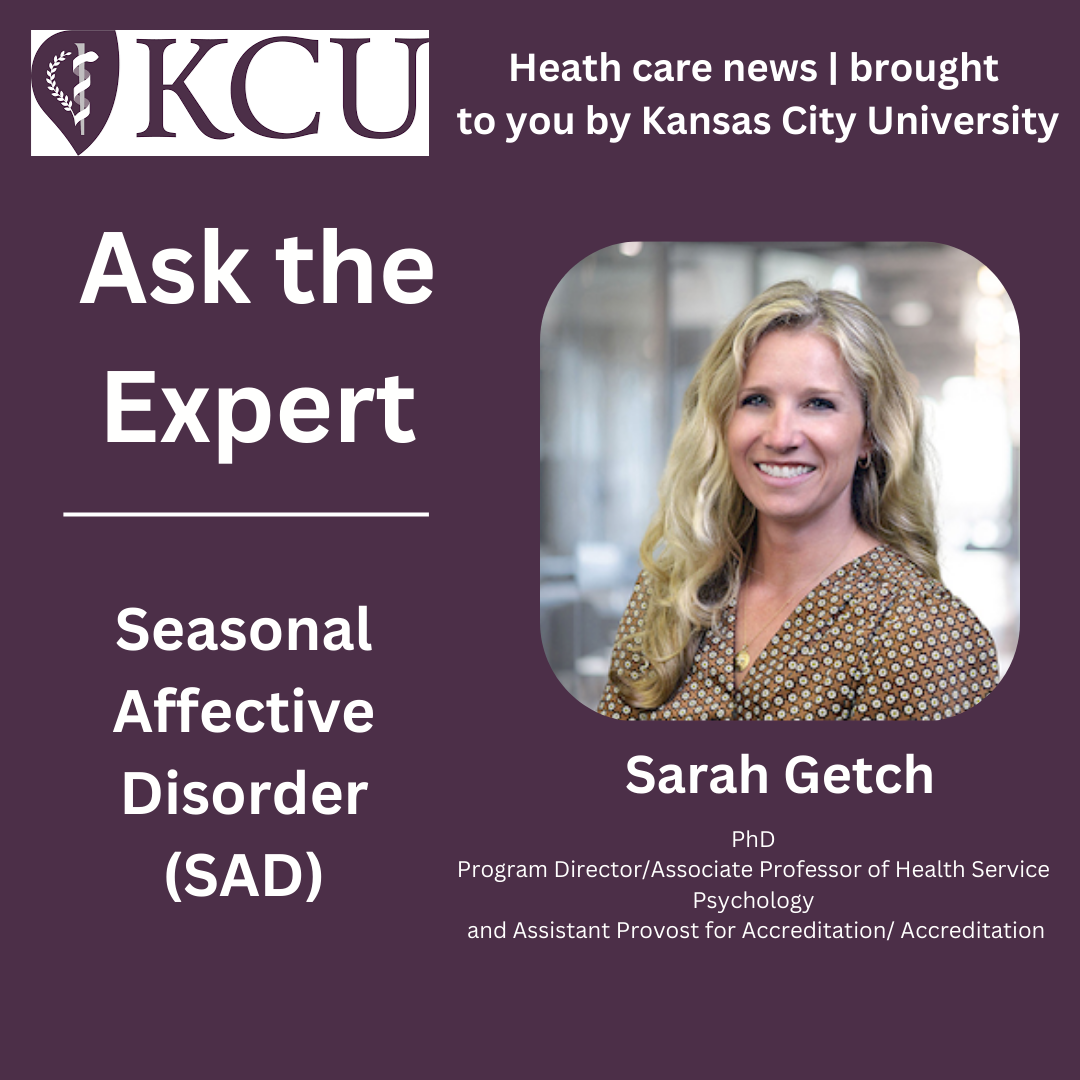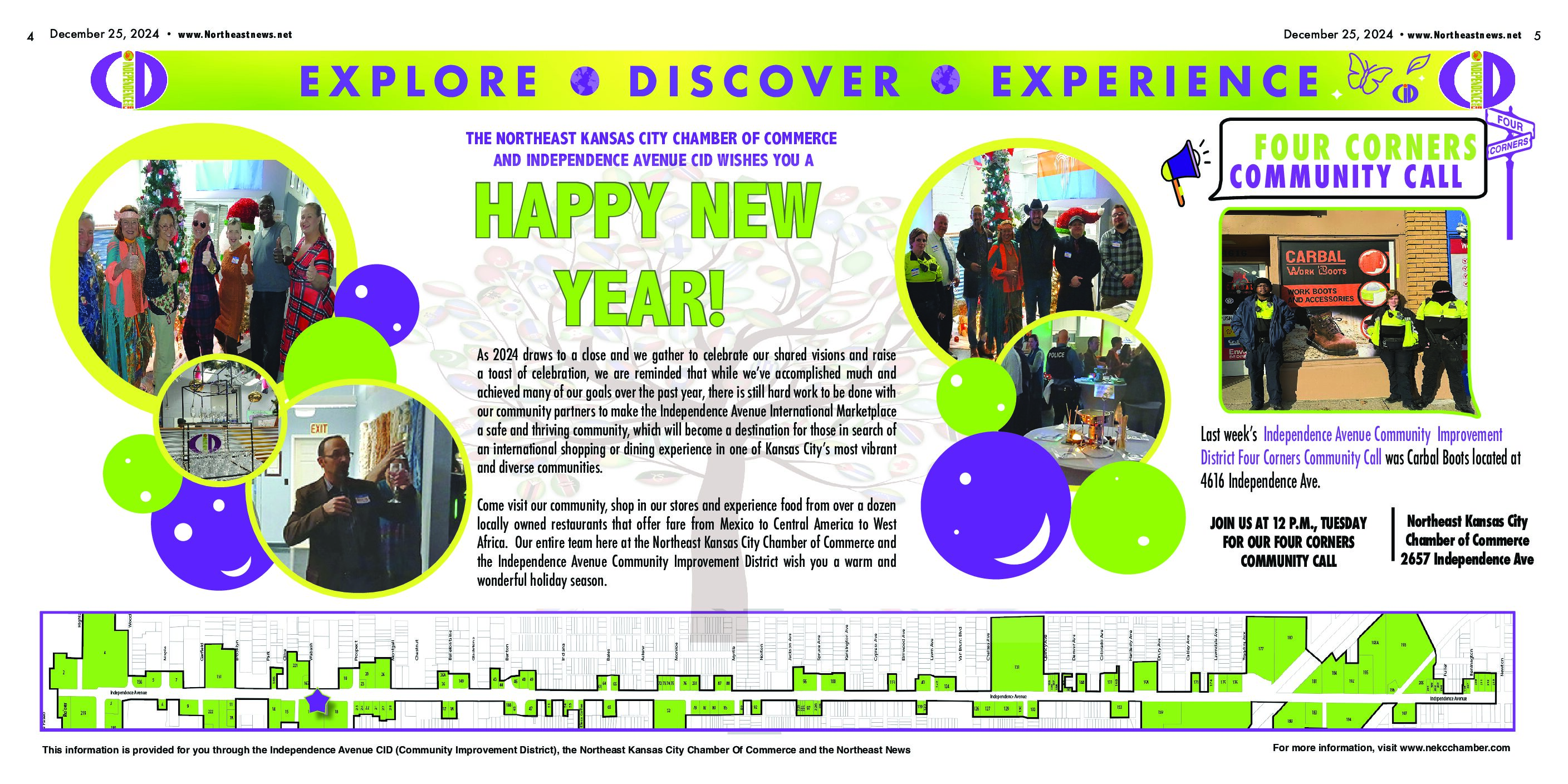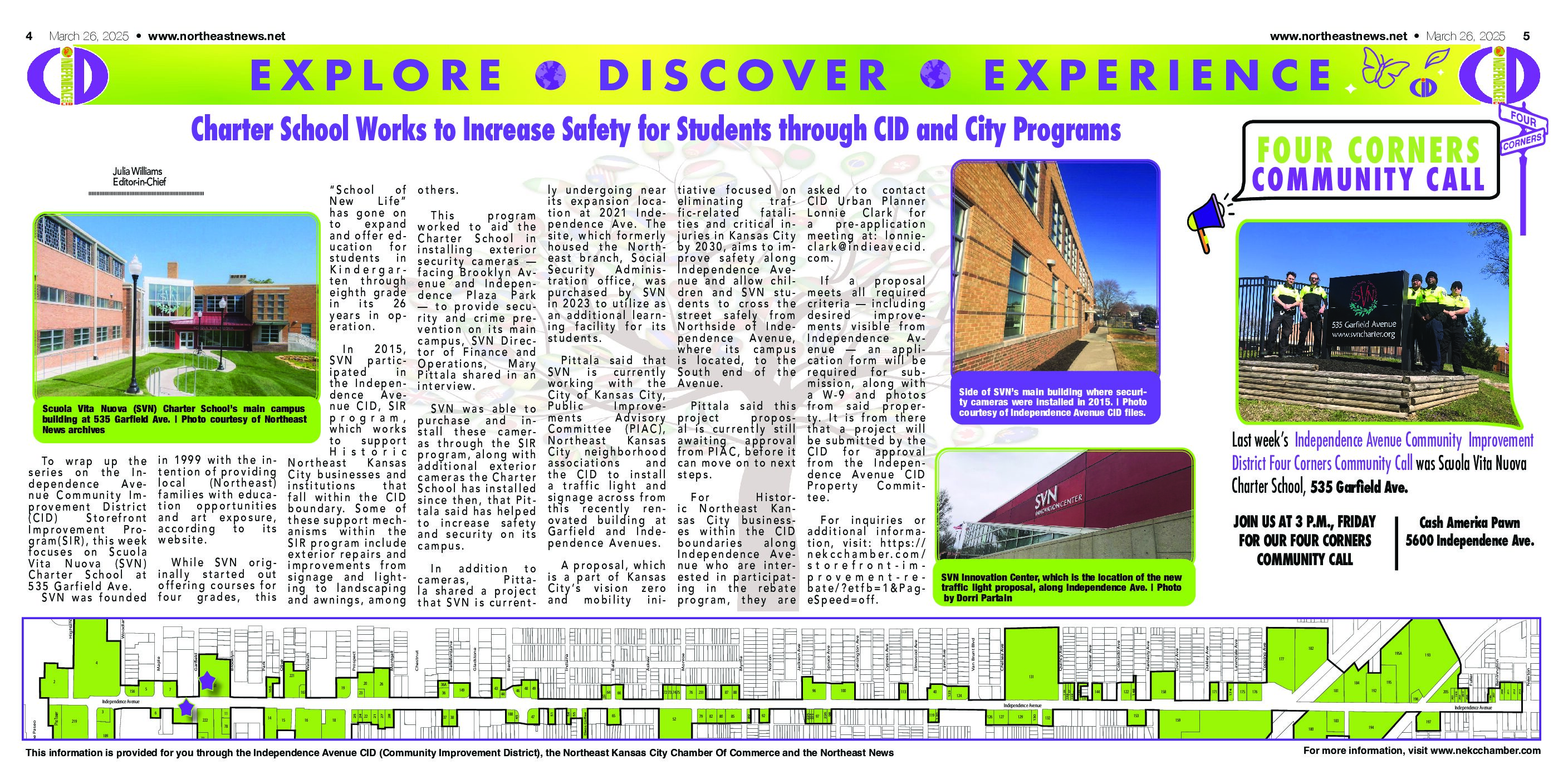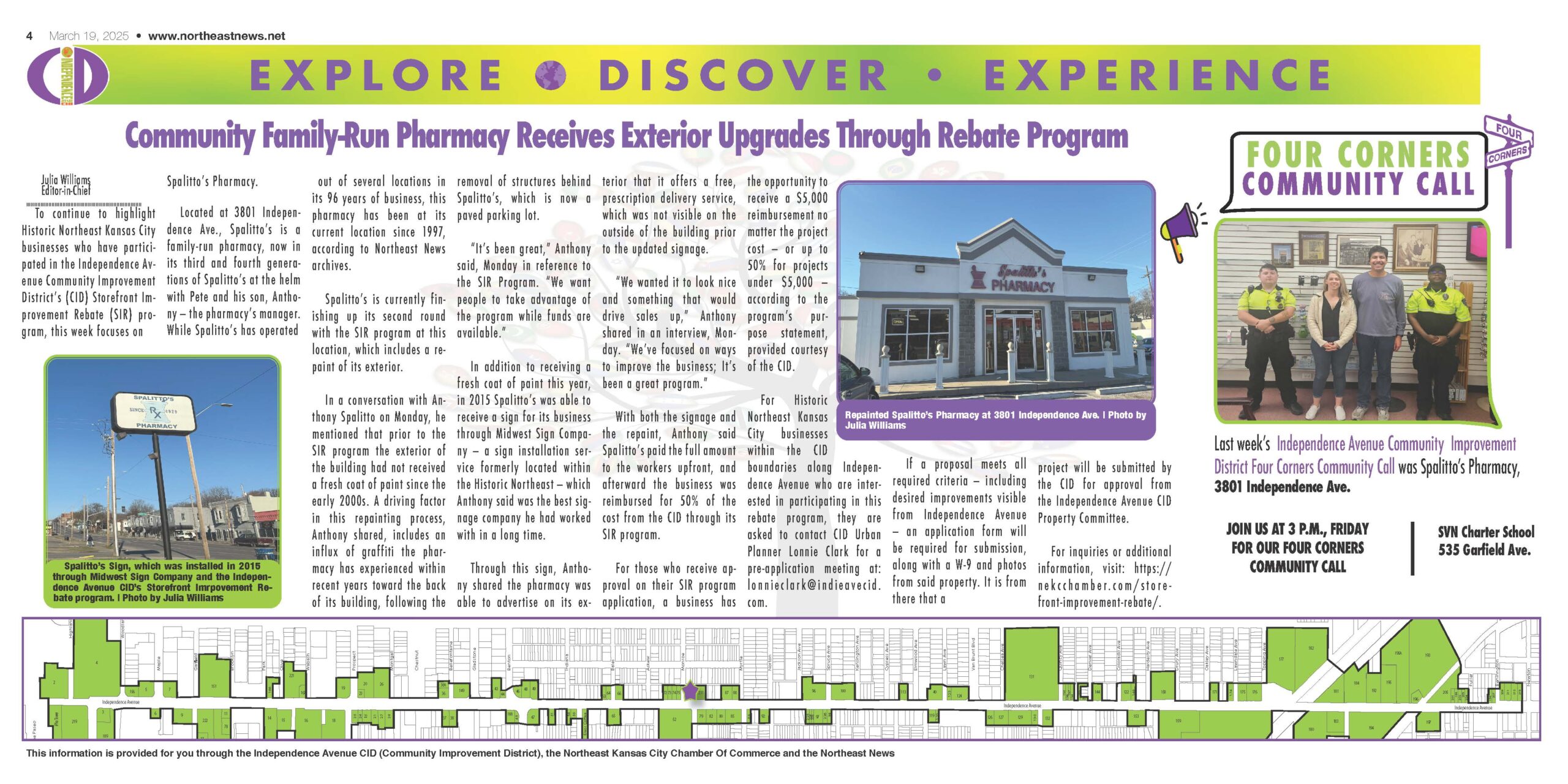
Admin, Sarah Getch
PhD, Program Director/Associate Professor of Health Service Psychology and Assistant Provost for Accreditation/ Accreditation at Kansas City University
*Content warning: This article contains topics related to mental health disorders and forms of depression*
With colder temperatures and shorter days within the winter months, nearly everyone’s mood can be negatively affected, but for some, these symptoms may require a diagnosis and treatment.
Seasonal Affective Disorder (SAD) is a category of depression, which is related to a particular time of year. The symptoms experienced during SAD are the same as symptoms experienced during a Major Depressive Disorder (MDD). However, SAD is unique in that the onset of symptoms, or when symptoms start, occur in fall and then remit in spring.
Symptoms experienced may include — but are not limited to:
- Sadness
- Low mood
- Hopelessness
- Low energy
- Oversleeping
- Not enjoying things you used to
- Weight gain
- Relationship difficulties
For individuals experiencing these symptoms for most of the day, nearly every day for two weeks it may be time to seek care from a licensed professional, Kansas City University Associate Professor of Health Service and Psychology, Sarah Getch shared.
The exact cause of SAD is currently unknown, but research has shown that changes in sunlight exposure impact how the body regulates serotonin and vitamin D. Low levels of serotonin and vitamin D are associated with MDD and related conditions.
Risk Factors:
- Family history: If someone in your family has experienced depression, you are more likely to experience depression.
- Current diagnosis: If you are experiencing depression, your symptoms may worsen throughout the fall and spring months.
- Where you live: If you live far north or south of the equator, you are at greater risk for SAD.
- Insufficient vitamin D: We absorb vitamin D from the sun, which can help boost serotonin activity. However, decreased amounts of vitamin D can increase risk of SAD.
Changes in exposure to daylight can impact the production and activity of serotonin in the brain. It’s important to note that SAD is not a “lighter” form of MDD, rather it is the same symptoms experienced during a specific period of time.
Women are at a higher risk of developing SAD, as are younger adults compared to older adults. Research has shown that women are at higher risk of developing nearly every mental health disorder in comparison to men. SAD presenting a higher risk for women remains consistent with prior research regarding female anatomy. Sleep disruption, specifically oversleeping, can play a significant role in SAD. Adolescents may already be experiencing sleep disruption in the form of oversleeping, which therefore limits their exposure to sunlight to an even greater extent.
Common treatments:
- Medication (Serotonin-Selective Reuptake Inhibitors)
- Psychotherapy
- Phototherapy or light therapy
Researchers have attributed light therapy — also known as phototherapy — as an effective method of prevention in an acute episode of depression. Light therapy includes the process of exposure to direct sunlight in controlled wavelengths in an effort to improve mental health, according to the Mayo Clinic. Cognitive Behavioral Therapy (CBT) is another method used by professionals, which has proven effective and may have a longer lasting impact due to the focus on changing thought patterns and behaviors. CBT includes a form of talk therapy, which restructures an individual’s negative thought process and aids them in responding in a more positive, productive manner, according to the Mayo Clinic.
Lifestyle changes, such as exercise or diet, can help alleviate the symptoms of seasonal depression. Some helpful behaviors to practice if you are feeling low this season include:
- Getting exposed to as much sunlight as possible (wear your sunscreen!)
- Consider going without sunglasses when you are outside
- Stay on a regular sleep/wake schedule
- Postpone major life stressors
- Get some exercise with a friend
To support someone experiencing seasonal depression:
- Be the friend who gets them outside!
- Go with them for a walk in the sunshine!
- Enjoy an outdoor sporting event together!
Some advice for anyone looking to prevent or lessen the effects of seasonal depression during winter is to:
Recognize the red flags (thoughts or behaviors) that tip you off to a mood change. Once you see these red flags, remember what behavior changes can be made to get as much exposure to sunlight as possible. Plan ahead to avoid major stressors and increase your social outings. Go do something positive for someone else!


















